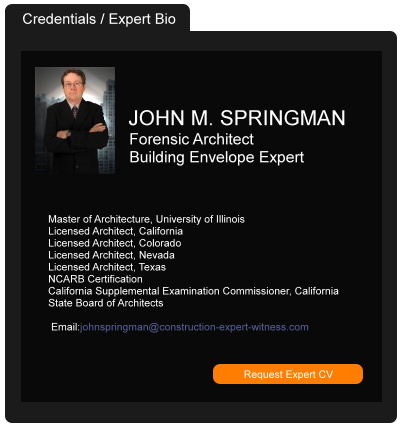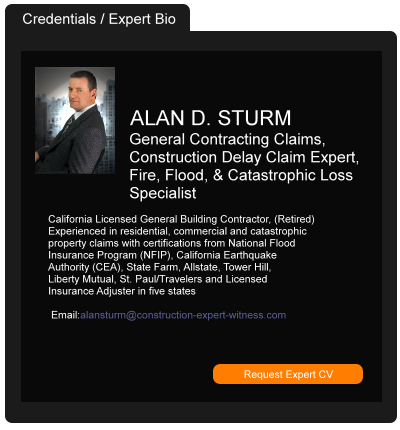The Impact of Sopris Lodging v. Schofield Excavation on Timeliness of Colorado Construction Defect Claims
January 26, 2017 —
Jean Meyer - Colorado Construction LitigationOn October 20, 2016, the Colorado Court of Appeals announced the Sopris Lodging, LLC v. Schofield Excavation, Inc.[1] decision. The Sopris decision significantly altered the potential pitfalls awaiting a general contractor in pursuit of third-party claims as well as potential defenses available for a subcontractor defending against third-party claims.
By way of background, the Sopris construction defect case arose out of the following facts: TDC was the general contractor for the construction of a hotel owned by Sopris Lodging. On March 11, 2011, Sopris Lodging sent TDC a notice of claim regarding alleged construction defects. On May 24, 2013, Sopris Lodging filed a complaint in district court asserting construction defect claims against one of the subcontractors of the hotel, and against the general contractor’s principals, but not the general contractor. Contemporaneous with the filing of the suit, Sopris Lodging and TDC entered into an agreement to toll the statute of limitations on Sopris Lodging’s potential claims against TDC. In August 2013, Sopris Lodging joined the general contractor to the suit. A year later, in 2014, the general contractor joined a variety of subcontractors as third-party defendants.
Read the court decisionRead the full story...Reprinted courtesy of
Jean Meyer, Higgins, Hopkins, McLain & Roswell, LLCMr. Jean may be contacted at
meyer@hhmrlaw.com
Eighth Circuit Rejects Retroactive Application of Construction Defect Legislation
September 17, 2014 —
Tred R. Eyerly – Insurance Law HawaiiThe Eighth Circuit refused to retroactively apply an Arkansas statute establishing coverage for faulty workmanship. J-McDaniel Const. Co., Inc. v. Mid-Continent Cas. Co., 2014 U.S. App. LEXIS 14911 (8th Cir. Aug. 4, 2014).
The homeowners sued J-McDaniel for faulty workmanship in constructing their home. The defective construction work was performed by subcontractors. Mid-Continent refused to defend or indemnify J-McDaniel.
The insured sued Mid-Continent. The district court dismissed the claim pursuant to Essex Ins. Co. v. Holder, 261 S.W. 3d 456, 460 (Ark. 2008). In Essex, the Arkansas Supreme Court held that defective workmanship resulting in damages only to the work product itself was not an occurrence. Although The Arkansas legislature overruled Essex by statute, the district court found that the Arkansas case law barred retroactive application of the statute.
Read the court decisionRead the full story...Reprinted courtesy of
Tred R. Eyerly, Insurance Law HawaiiMr. Eyerly may be contacted at
te@hawaiilawyer.com
Cooperation and Collaboration With Government May Be on the Horizon
September 17, 2018 —
Pillsbury's Construction & Real Estate Law Team - Gravel2GavelIn Is the Pendulum Swinging on Agency and Government Contractor Cooperation?, Pillsbury attorneys Mike Rizzo, Glenn Sweatt and Kevin Massoudi discuss comments from the Department of Defense as well as recent good faith and fair dealing court decisions that point to and encourage improved contractor/government relationships. Their key takeaways include
- Government officials are actively encouraging collaboration with, and less antagonism of, industry contractors.
Read the court decisionRead the full story...Reprinted courtesy of
Pillsbury's Construction & Real Estate Law Team
Six Inducted into California Homebuilding Hall of Fame
February 04, 2013 —
CDJ STAFFThe California Homebuilding Foundation has inducted six industry leaders into their Homebuilding Hall of Fame, in recognition of both their professional accomplishments and their philanthropic and volunteer activities.
The six homebuilders to be honored are Sherman S. Haggerty of Lennar Corp., Joe Head of the SummerHill Land Division of SummerHill Homes, Robert B. MacLeod of Newland Real Estate Group, John J. Ryan Jr. of Brookfield Homes Bay Area, Tom Sudberry of Sudberry Properties, and Bill Watt of Baywood Development Group.
Read the court decisionRead the full story...Reprinted courtesy of
Project Completion Determines Mechanics Lien Recording Deadline
April 08, 2024 —
William L. Porter - Porter Law GroupThe California mechanics lien is one of the most powerful collection remedies available to contractors, subcontractors and suppliers who are unpaid for work performed and materials supplied in relation to a California private works construction project. The mechanics lien allows the claimant to actually sell the property where the work was carried out in order to obtain payment, entirely of course, against the wishes of the property owner. There are a number of important steps to follow and timelines to be met in order to pursue this remedy.
First, Understand Your Preliminary Notice Deadline
Working within deadlines is absolutely crucial to preserving mechanics lien rights under California law. The deadlines differ, depending on whether you are a “direct” contractor, also known as “original” or “prime” contractor (one who contracts directly with the property owner) or a subcontractor or material supplier. The process begins with the serving of a “preliminary notice” no later than 20 days after the party serving the preliminary notice begins supplying labor or materials to the project. Direct contractors are only required to serve the preliminary notice on the construction lender (Civil Code section 8200-8216), whereas subcontractors and material suppliers must serve not only the construction lender, but also the owner and direct contractor (see Civil Code section 8200(e)).
Read the court decisionRead the full story...Reprinted courtesy of
William L. Porter, Porter Law GroupMr. Porter may be contacted at
bporter@porterlaw.com
Three Key Takeaways from Recent Hotel Website ADA Litigation
April 26, 2021 —
Shane Singh & Grace Mehta - Lewis BrisboisDespite the COVID-19 pandemic and its chill on the hospitality industry, ADA-related digital lawsuits increased by approximately 23% in 2020. Many of these lawsuits are filed against hotels. The complaints allege that a hotel’s online reservation system failed to provide enough detail for individuals with disabilities to decide if the hotel meets their accessibility needs.
These plaintiffs will often claim that it is insufficient to describe an aspect of a hotel or room as “accessible” because the term is an opinion or conclusion. Plaintiffs argue that a hotel’s reservation system must report specific information, such as the dimensions of space under accessible desks and sinks, the slopes of surfaces, doorway clearance, and numerous other technical requirements under the ADA.
Many hotels are fighting back, arguing that the detail provided is sufficient and in compliance with the ADA. So far this year, in February 2021, two judges in the U.S. District Court for the Central District of California, Judge Percy Anderson and Judge Cormac Carney, agreed with the defendants, dismissing three cases with prejudice.
Reprinted courtesy of
Shane Singh, Lewis Brisbois and
Grace Mehta, Lewis Brisbois
Mr. Singh may be contacted at Shane.Singh@lewisbrisbois.com
Ms. Mehta may be contacted at Grace.Mehta@lewisbrisbois.com
Read the court decisionRead the full story...Reprinted courtesy of
Motion to Strike Insurer's Expert Opinion Granted
August 13, 2019 —
Tred R. Eyerly - Insurance Law HawaiiThe court granted the insured's motion to strike the testimony of the insurer's expert because the opinion lacked sufficient explanation or analysis. Affinity Mut. Ins. v. Thacker Air Conditioning Refrigeration Heating, 2019 U.S. Dist. LEXIS 84713 (N.D. Ind. May 20, 2019).
The insured owned a market that needed renovations. The roof over an addition to the market extended from the wall of the extension to the top of the existing roof. The area between the old and new roofs was filled with blown-in insulation, so that the structural support from the new overbuilt roof was not visible. The weight of the overbuilt roof rested on top of the existing roof at the point where they met. This added additional weight on the trusses supporting the main roof.
In 2014, the market upgraded the building with heating and insulation. Thacker was a subcontractor for work on the hearing system. Six gas furnaces, spaced about 35 feet apart along the length of the building, were placed by Thacker. The total weight of each unit was estimated at 280 pounds.
Read the court decisionRead the full story...Reprinted courtesy of
Tred R. Eyerly, Damon Key Leong Kupchak HastertMr. Eyerly may be contacted at
te@hawaiilawyer.com
NJ Transit’s Superstorm Sandy Coverage Victory Highlights Complexities of Underwriting Property Insurance Towers
February 24, 2020 —
Traub LiebermanIn New Jersey Transit Corp. v. Certain Underwriters at Lloyd’s, London, 2019 WL 6109144 (N.J. App. Div. Nov. 18, 2019), New Jersey Transit (“NJT”) defeated the claim of several of its insurers that a $100 million flood sublimit applied to its Superstorm Sandy damages and recovered the full $400 million limits of its property insurance tower. The decision is a big win for the beleaguered transit agency, and for insurance professionals working with complex insurance towers, the decision highlights critical underwriting issues that can dramatically affect the amount of risk transferred by the policyholder or assumed by the insurer.
In NJ Transit, NJT secured a multi-layered property insurance program providing $400 million in all-risk coverage. The first and second layers provided $50 million each, the third and fourth layers provided $175 million and $125 million, respectively, with several insurers issuing quota shares in each layer. The program contained a $100 million flood sublimit, and “flood” was defined to include a “surge” of water. The program did not contain a sublimit for damage caused by a “named windstorm,” which was defined to include “storm surge” associated with a named storm. After NJT made its Superstorm-Sandy claim, some of the third- and fourth-layer insurers advised NJT that the $100 million flood sublimit applied to bar coverage under their policies. NJT sued these excess insurers and won at the trial and appellate levels.
In holding that the $100 million flood sublimit did not apply, the court applied the rule of construction that the specific definition of “named windstorm,” which included the terms “storm surge” and “wind driven water,” controlled over the policies’ more general definition of “flood.” In ascertaining the parties’ intent, the court noted that the omission of the term “storm surge” in the definition of “flood” evidenced an intention that the flood sublimit would not apply to storm surges. Based on this finding, the court rejected several arguments made by the insurers that other policy provisions evidenced the parties’ intent to apply the flood sublimit to all flood-related losses, regardless of whether the loss was caused by a storm surge.
Read the court decisionRead the full story...Reprinted courtesy of
Traub Lieberman


































































